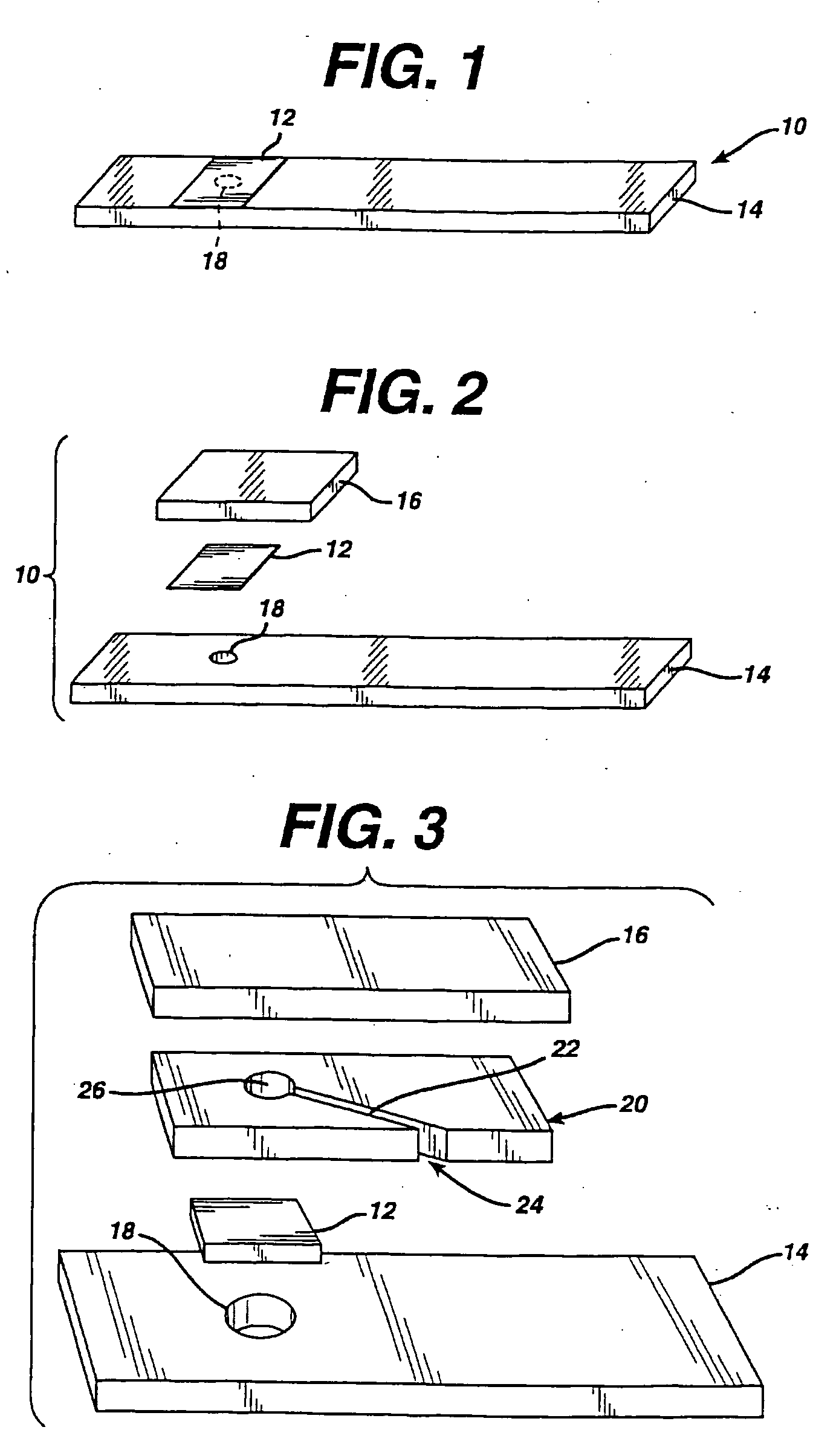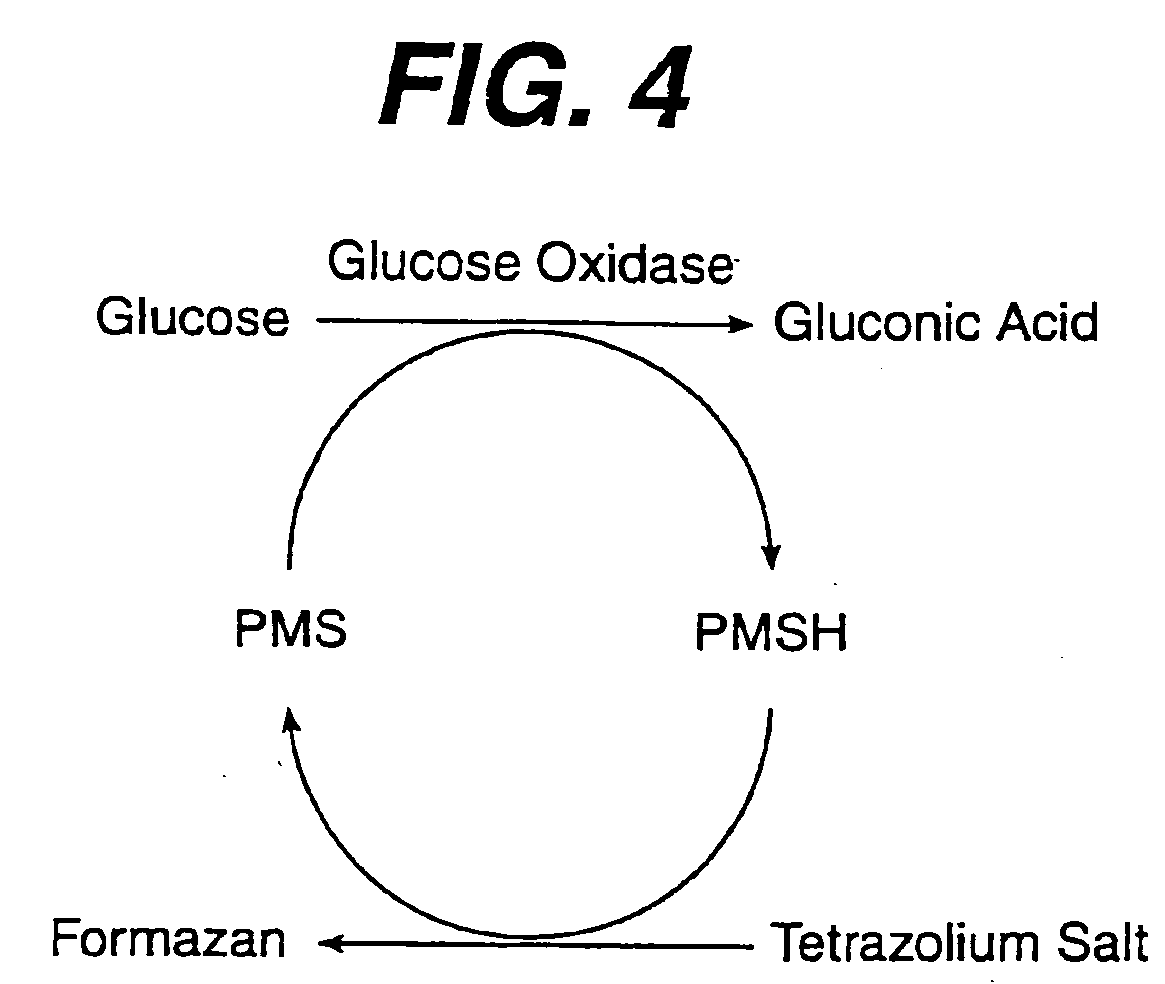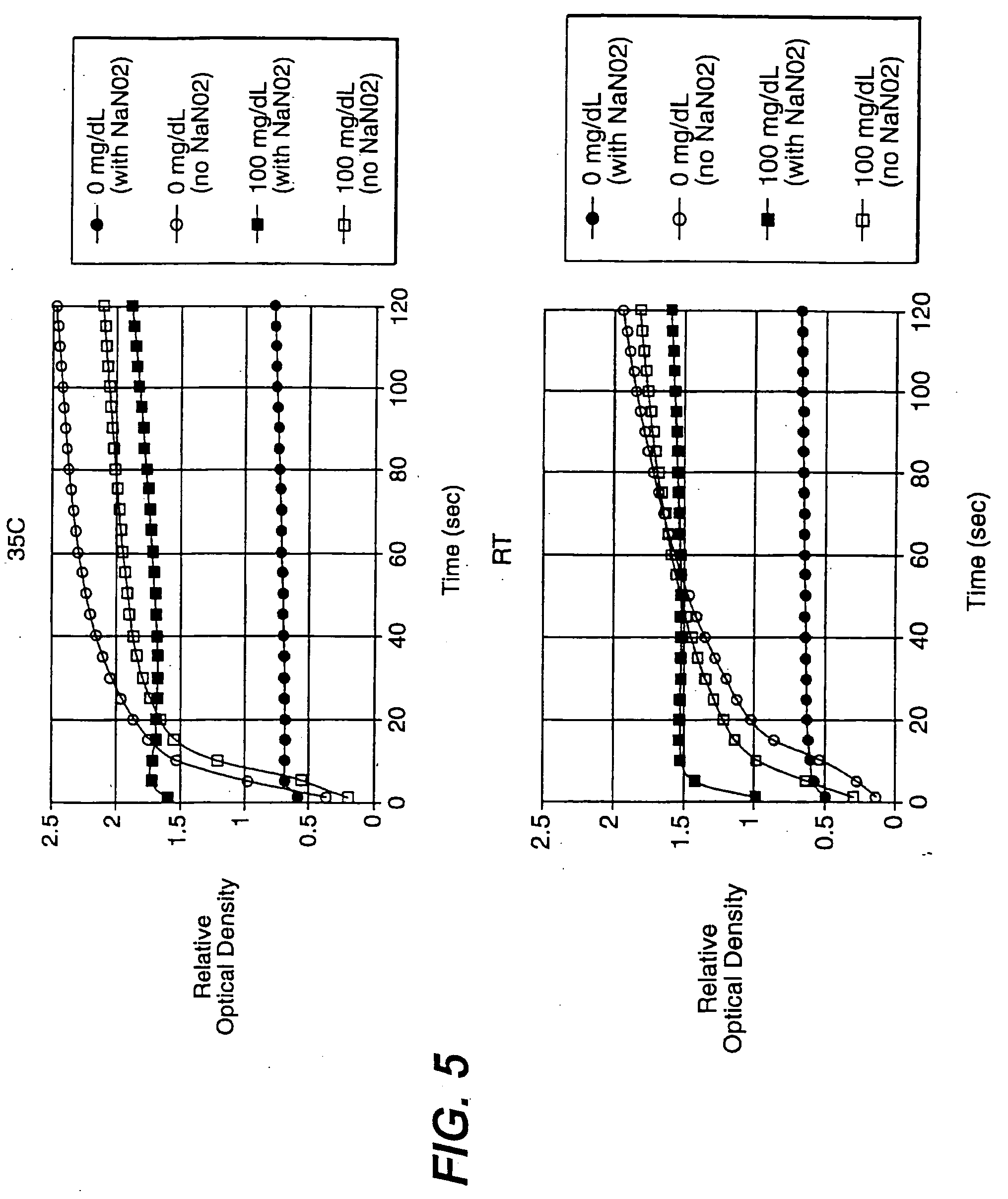Diagnostics based on tetrazolium compounds
a technology of tetrazolium compounds and diagnostics, applied in the direction of filtration separation, separation processes, instruments, etc., can solve the problems of insulin-dependent patients being vulnerable, fat consumption and fatty acid production can reach potentially harmful levels, and certain neurologic disorders
- Summary
- Abstract
- Description
- Claims
- Application Information
AI Technical Summary
Benefits of technology
Problems solved by technology
Method used
Image
Examples
example 1
[0066] A 0.8 μm nylon membrane obtained from Pall Corporation (East Hills, N.Y.) was dipped into the reagent of Table 1, until saturated. The excess reagent was scraped off gently with a glass rod. The resulting membrane was hung to dry in a 56° C. oven for 10 minutes. Porex (0.6 mm thick) was soaked in the nitrite solution of Table 2 and then hung to dry in a 100° C. oven for ten hours. Finally, the membrane was laminated between a polyester stock (0.4 mm Melenex® polyester from ICI America, Wilmington, Del.) and the nitrite-impregnated Porex.
example 2
[0067] The procedure of Example 1 was repeated, except that the first dip was the reagent of Table 3, and there was no second dip, since the Porex was not needed.
TABLE 1Reagent for a Glucose Test PadComponentsQuantityWater100ml(2-[-Morpholino]ethanesulfonic acid) sodium2.2gmsalt MES (MW 217.2, Sigma, St. Louis, MO, USA)Adjust pH to 5-7 by adding 6 M HCl)Tetonic 1307 (BASF Corporation, Moun Olive, New1-3gmJersey, USA)PSSA, Polystyrenesulfonic acid, sodium salt (MW2-4gm70,000, Polysciences, Inc., Warrington, PA,USA)Crotein (Croda Inc., Parsippany, NJ, USA)2-4gmMannitol (MW 182, Sigma, St. Louis, MO, USA)1-10gmPhenazine Methosulfate (PMS, MW 306.34, Sigma,30-300mgSt. Louis, MO, USAWST-5 (MW 1331.37, Dojindo)0.8-4gmGlucose Oxidase (GO, TOYOBO)100-1000KU
[0068]
TABLE 2Nitrite ReagentComponentsQuantity10 mM Phosphate Buffer Saline, pH7.4, (P-3813,70mlSigma, St. Louis, MO, USA)Ethanol30mlSodium Nitrite (MW69, Aldrich Chemicals, Milwaukee,5gmWI, USA)Polyvinylpyrrodine (MW 40,000, Sigma, St....
PUM
 Login to View More
Login to View More Abstract
Description
Claims
Application Information
 Login to View More
Login to View More - R&D
- Intellectual Property
- Life Sciences
- Materials
- Tech Scout
- Unparalleled Data Quality
- Higher Quality Content
- 60% Fewer Hallucinations
Browse by: Latest US Patents, China's latest patents, Technical Efficacy Thesaurus, Application Domain, Technology Topic, Popular Technical Reports.
© 2025 PatSnap. All rights reserved.Legal|Privacy policy|Modern Slavery Act Transparency Statement|Sitemap|About US| Contact US: help@patsnap.com



